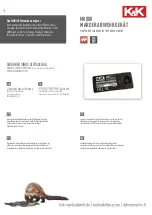
TC1796
System Units (Vol. 1 of 2)
Program Memory Unit
User’s Manual
7-27
V2.0, 2007-07
PMU, V2.0
7.2.7
Read and Write Protection
In the TC1796, three different types of protection are possible:
•
Read protection for PFLASH and DFLASH
(always implies also a global write protection for PFLASH and DFLASH)
•
Sector write protection for PFLASH
•
Sector OTP write protection for PFLASH
In general, three protection configurations, assigned to so-called “users”, are defined in
UCBs.
•
User 0 = User Configuration Block 0:
This is the master user. It is able to install read protection for the whole PFLASH and
DFLASH. It can also install sector write protection for the PFLASH sectors. User 0
controls its protection configuration and its keywords via UCB0.
•
User 1 = User Configuration Block 1:
User 1 is able to install sector write protection for the PFLASH sectors with lower
priority than user 0. User 1 controls its protection configuration and its keywords via
UCB1.
•
User 2 = User Configuration Block 2:
User 2 is able to install sector OTP write protection for the PFLASH sectors. OTP
write-protected sectors are locked for ever, and are never re-programmable.
If read or write protection is installed and activated once, changing the read/write
protection configuration parameters in the UCBs is password-protected and can only be
executed if the passwords are known.
Note: If any PFLASH sector is locked for ever (OTP installed), PFLASH and DFLASH
related testing investigations for Failure Analysis Requests (FARs) are no more
possible.
7.2.7.1
User Configuration Block Definitions
The three 1 Kbyte user configuration blocks UCBx (x = 0-2) contain four 256 byte pages
each. The contents of the three user configuration blocks determine the read, write, and
OTP protection configuration as assigned for user 0, user 1, and user 2.
The UCBs are Flash memory locations that can be programmed page-wise with the
Write User Configuration Page command, and erased block-wise by the Erase User
Configuration Block command. User configuration blocks UCB0 and UCB1 can be
programmed/erased during TC1796 device life-time only up to 4 times. UCB2 can be
programmed only once.
defines the contents of the three UCBs.
















































